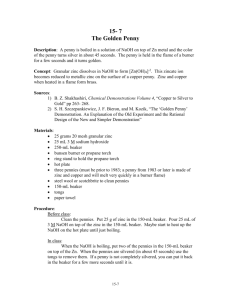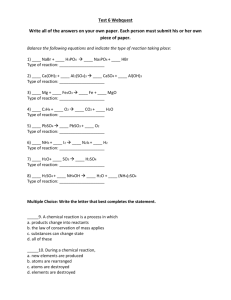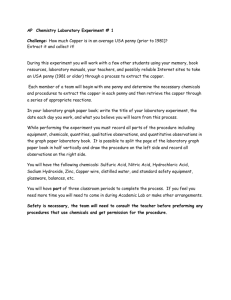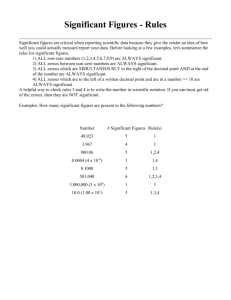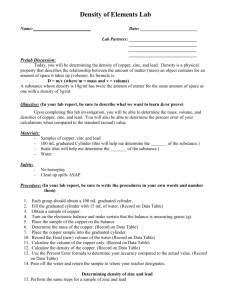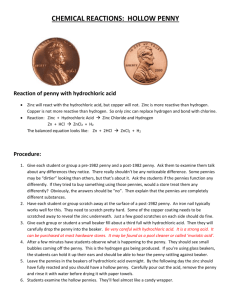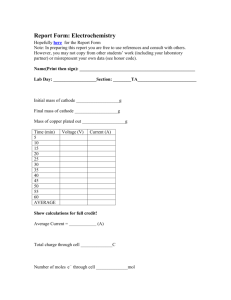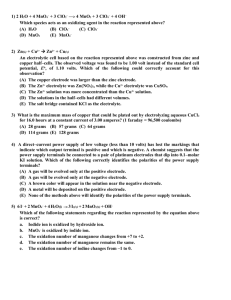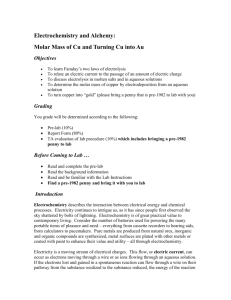Extracting Zinc and Copper Lab
advertisement
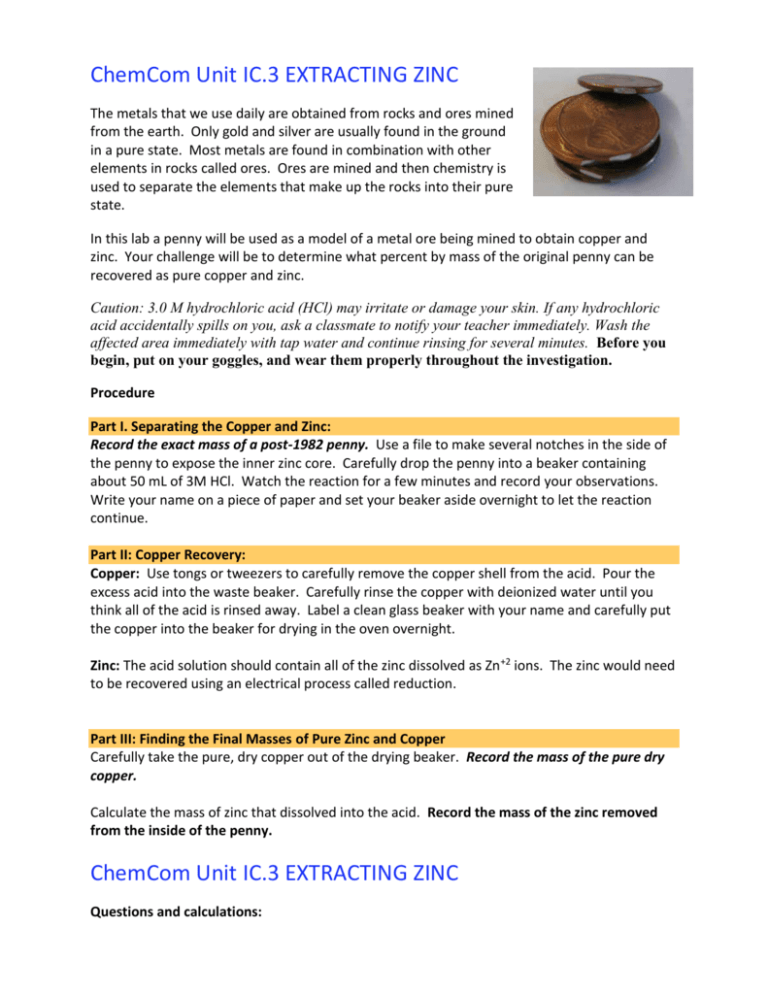
ChemCom Unit IC.3 EXTRACTING ZINC The metals that we use daily are obtained from rocks and ores mined from the earth. Only gold and silver are usually found in the ground in a pure state. Most metals are found in combination with other elements in rocks called ores. Ores are mined and then chemistry is used to separate the elements that make up the rocks into their pure state. In this lab a penny will be used as a model of a metal ore being mined to obtain copper and zinc. Your challenge will be to determine what percent by mass of the original penny can be recovered as pure copper and zinc. Caution: 3.0 M hydrochloric acid (HCl) may irritate or damage your skin. If any hydrochloric acid accidentally spills on you, ask a classmate to notify your teacher immediately. Wash the affected area immediately with tap water and continue rinsing for several minutes. Before you begin, put on your goggles, and wear them properly throughout the investigation. Procedure Part I. Separating the Copper and Zinc: Record the exact mass of a post-1982 penny. Use a file to make several notches in the side of the penny to expose the inner zinc core. Carefully drop the penny into a beaker containing about 50 mL of 3M HCl. Watch the reaction for a few minutes and record your observations. Write your name on a piece of paper and set your beaker aside overnight to let the reaction continue. Part II: Copper Recovery: Copper: Use tongs or tweezers to carefully remove the copper shell from the acid. Pour the excess acid into the waste beaker. Carefully rinse the copper with deionized water until you think all of the acid is rinsed away. Label a clean glass beaker with your name and carefully put the copper into the beaker for drying in the oven overnight. Zinc: The acid solution should contain all of the zinc dissolved as Zn +2 ions. The zinc would need to be recovered using an electrical process called reduction. Part III: Finding the Final Masses of Pure Zinc and Copper Carefully take the pure, dry copper out of the drying beaker. Record the mass of the pure dry copper. Calculate the mass of zinc that dissolved into the acid. Record the mass of the zinc removed from the inside of the penny. ChemCom Unit IC.3 EXTRACTING ZINC Questions and calculations: Answer the questions in complete sentences. For the problems that include a calculation, write a sentence that explains what the calculation is showing AND show your calculation. 1. Where does the United States rank in terms of the annual production of copper and zinc? (pg 85) 2. Table 1.5 on page 88 lists several chemical and physical properties of copper. Which two properties do you think are the most important in choosing copper to coat the outside of a penny. Explain your reasoning. 3. Page 91 shows sample problems calculating percentages. Use these sample problems as a model and calculate the following for this lab: a. Calculate the % mass of Copper recovered from the original penny b. Calculate the % mass of Zinc removed from the original penny. 4. Complete the table below showing how many protons, neutrons and electrons were in the zinc and copper during different stages of this lab. Atom or Ion Protons Neutrons Electrons Copper-64 (Cu) Zinc-65 (Zn) Dissolved Zinc-65 Ions (Zn+2) 5. Atoms are counted in units of moles. Ratios can be used to convert masses into moles. Use ratios and the molar mass of each element found on the periodic table to... a. Calculate the number of moles of zinc removed from the inside of the penny. b. Calculate the number of moles of copper recovered based on the grams of pure copper collected at the end of the lab.

